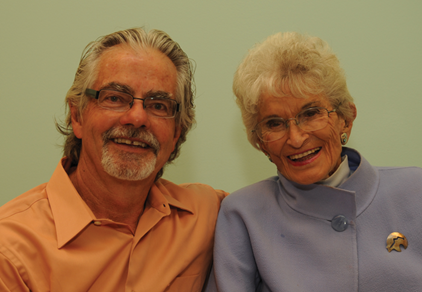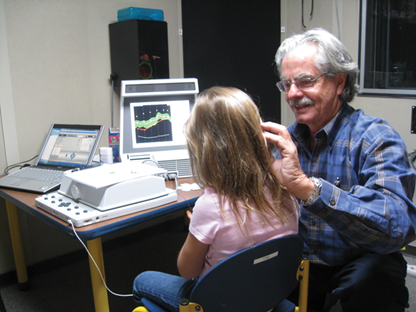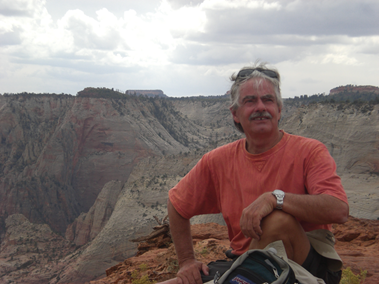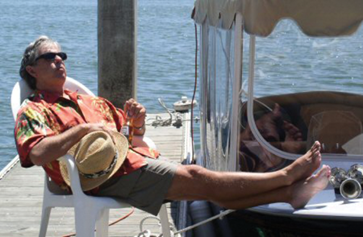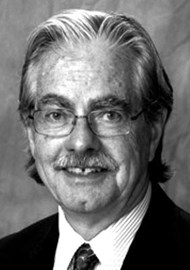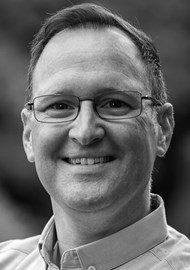Gareth Smith chats with Dr Jerry Northern and learns about his fascination with Mount Everest, the legendary Marion Downs and his unique career in audiology…
Jerry with the legendary Marion Downs.
Tell us about your background, how did you come to be involved in audiology?
I was raised from the age of two years by my deaf grandparents who were both graduates of Gallaudet University (a university for the education of the deaf and hard of hearing based in Washington, DC). American Sign Language (ASL) was our primary means of communication in our home. In college I majored in experimental psychology and while waiting to be called for Army duty during the Vietnam years, I enrolled in the deaf education post-graduate program at Gallaudet. There, I took my first course in audiology and found it to be an interesting blend of the psychophysical methods, clinical psychology and my background knowledge of deafness. I was then able to defer my Army commitment to pursue a PhD in audiology at the University of Colorado and ultimately serve as one of the first military audiologists for four years.
Who has inspired you in your career and why?
I was fortunate to work beside the legendary Marion Downs for nearly 30 years in an extremely busy hospital audiology clinic. We saw patients of all ages, but her interests in paediatric audiology issues were nothing less than contagious. We recognised that we had a unique opportunity to combine our individual interests into a cohesive paediatric audiology program – and these experiences led to the first edition of Hearing in Children published in 1974.
I am proud to mention that my family has been involved with the deaf world for four generations. Beginning with my deaf grandparents, their daughter (my aunt) was a teacher of the deaf for 30 years; I have been in audiology for more than four decades; and one of my daughters is currently the head teacher in a pre-school program for hearing-impaired children.
What’s your earliest memory of a patient? Why has it stayed with you?
It is not so much a particular patient that I recall, but my long career has covered such amazing developments that have vastly improved the lives of children with hearing impairment. My earliest paediatric hearing aid fittings back in the mid-1960s were heavy-duty body aids worn with a leather harness and coupled to a hard acrylic full earmould – and our ‘binaural’ fittings were accomplished with a Y-cord attached to a single body aid! The advent of electrophysiologic measures, newborn hearing screening, and advances in amplification technology have been absolutely earth-shaking for the paediatric audiologist.
I was once in a lecture given by Charles Berlin; it was entitled ‘30 years of making mistakes and how to avoid them’, what would be your top advice for someone starting out in the profession?
Pursue a wide breadth of education because you never know what direction your career might take you in; take advantage of every opportunity that presents itself, and recognise and accept the important impact you can have on the lives of your patients and conduct yourself accordingly.
Over your career what’s the biggest change you have seen?
The impact and success of cochlear implants have far exceeded my expectations. I recall how disappointed I was with the earliest single-channel implants thinking we could provide better hearing with the power hearing aids of those days. However, I am continually amazed at how well patients do (especially early implanted children) with their cochlear implants. The improved speech qualities and language skills of profoundly deaf children, leading to their success in mainstream education programs, provides great promise for these children as adults.
Who, in the wider world, do you admire?
As an outdoorsman, skier, and avid hiker-mountain climber, I have always had a strong fascination with Mount Everest and I even trekked to the Everest base camp in 1984 when Nepal was first opened up to Western travellers. Thus, I have great admiration for Sir Edmund Hillary, not only for his climbing accomplishments, but for his humanitarian services in establishing a much-needed system of elementary and secondary schools for the Himalayan Sherpa children of Nepal.
Your textbook with Marion Downs Hearing in Children is now in its sixth edition, what do you think the key is to the book’s longevity?
Initially, in 1974, Hearing in Children was the only textbook focused on paediatric audiology with little competition from other texts. I think the longevity of our text has been its unique emphasis on the medical aspects of paediatric hearing loss – written by audiologists for audiologists. A few previous book efforts had focused on the habilitation and education of children with hearing loss, but paediatric hearing loss is always tied to medical evaluatio,ns and treatments. We felt there was a need for the detailed description of paediatric hearing and hearing loss and an indepth understanding of the important medical and diagnostic implications of paediatric hearing impairments. In our daily hospital environment, we were part of an innovative Birth Defects Clinic that brought the diagnosis and management of syndromic and non-syndromic paediatric hearing loss to our attention in a way that we felt would be beneficial knowledge to audiologists – and that became a strong focus in all editions of our textbook.
It has indeed been 12 years since the last publication of Hearing in Children (5th Edition, 2002) and the world of paediatric audiology has changed astronomically! The widespread implementation of newborn hearing screening and the early identification of hearing loss along with developments in early intervention, have been significant game-changers for us all. Research based advancements in amplification technologies, treatments of hearing loss, genetics, and focus on family-directed services needed to be included in the new edition. In fact, much of the early research efforts regarding children with hearing loss have been rendered generally obsolete and many pages needed to be deleted. There have been so many technologic advancements during the past decade that much of the previous edition of Hearing in Children had to be discarded for the new edition. And, it should be noted that the new edition is about 200 pages longer than the previous edition due to all the developments in paediatric audiology that have occurred during the past 12 years.
Apart from Hearing in Children, what text would you recommend every audiologist reads?
I am an avid reader and it is difficult to make only one recommendation. However, my single recommended read is The Emperor of all Maladies by Dr Siddhartha Mukherjee (2010). It is a fascinating history of cancer treatment and research and develops the concept of individualised treatment protocols – a philosophy that should be embraced by audiologists for management of our hearing-impaired patients. Books like The Creative Destruction of Medicine (Eric Topol, 2011) and The New Digital Age (Eric Schmidt and Jared Cohen, 2013) should also be read by audiologists as they present many new ideas that have numerous applications that are likely to become routine for our audiology practices in future years.
What do you feel the big research need is right now?
I believe that the research areas of gene therapy, application of specific drugs and stem cell research may ultimately lead to the prevention of deafness – not in my lifetime, but certainly in the future. I’m a bit disappointed that there does not seem to be much encouragement for original research coming from audiologists these days.
What are you working on right now?
Although I am actually trying to slip quietly into retirement, it has been a busy year for me as President of my own non-profit Colorado Hearing Foundation, along with finalising the publication of the 6th Edition of Hearing in Children. I serve on the Board of Directors of the Marion Downs Centre for Hearing, Speech and Language in Denver, Colorado. I taught an AuD graduate course in Advanced Paediatric Audiology for the Nova Southeastern University satellite programme in London; I just completed the editing of the 2013 International Paediatric Symposium Proceedings for Phonak AG; and I continue to serve as a guest speaker for various venues – however, now on a somewhat selective schedule.
When you’re not working, where can you be found? How do you relax?
I spend as much time as possible in my mountain home high in the Colorado Rockies. We have a historic house built in 1893 located in a small Victorian mountain town near Aspen. I love to read, hike, ride my bike and work on my house and in my yard. Winter finds me in Southern California enjoying the sunshine and the beaches. My wife and I enjoy adventure travel and we try to take a couple of international trips each year in addition to spending time with our grandchildren as often as possible.
If you were sent to a desert island, what would be your three essentials (nope you can’t take a life raft or rescue equipment)?
- A big sun hat, sunglasses, sun block and an endless supply of beverages
- My iPad and a strong internet connection; and, most importantly…
- I couldn’t go without Deborah, my dear wife of 30 years.
Interview conducted by Gareth Smith.

